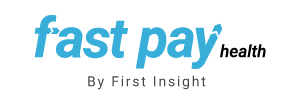How a Proactive Optometry Billing Solution Keeps Cash Flowing
/Dr. William Jackson, a therapeutic optometrist with The Eye Contact in Lake Jackson, Texas, has been providing optometry services to the community since 1991.
When the state of Texas issued a COVID-19 stay-at-home order in March 2020, Dr. Jackson recognized having an efficient optometric billing and revenue cycle management (RCM) solution in place positively impacted his practice, staff, and cash flow.
Denese Jackson, Consultant with The Eye Contact, shares how continual cash flow, healthy accounts receivable, and reduced insurance aging are critical, so revenue doesn’t slip through the cracks during a decrease in patient volume.
Photos provided by The Eye Contact, Inc.
What optometry billing challenges did you and your staff experience before you started with Fast Pay Health?
When we first opened The Eye Contact in 1996, a majority of patients were paying with cash. Now, more than 70% of our patients have insurance and/or vision care plans.
With this change in patient payment methods and with staff changes over the years, it’s crucial to maintain consistency in coding, denied claims management, accounts receivable (AR) cleanup, and insurance aging follow-ups.
How has Fast Pay Health helped your practice manage RCM challenges during COVID-19?
When we closed our practice for routine eye care needs during the COVID-19 stay-at-home order (6 weeks), we only provided services for patients who needed urgent or emergent care (either in our office or via telehealth).
Despite a 70% drop in billing insurance companies due to seeing fewer patients, Fast Pay Health diligently researched unpaid or denied claims, and corrected and processed rejected claims to recover the maximum payment possible. They reduced the insurance aging by 49% in only one month.
With Fast Pay Health keeping the cash flowing during the COVID-19 healthcare crisis, we were able to focus our attention on providing emergent and urgent care to our patients. Plus, we could focus on the health and well-being of our staff with continued education, COVID-19 safety training, and preparing our practice to reopen for routine eye care.
How does Fast Pay Health help you manage optometry telehealth and telemedicine billing?
To protect our staff and patients’ health, we transitioned to providing optometry telehealth (remote non-clinical) and telemedicine (remote clinical) services for emergent and urgent care. The American Optometric Association (AOA) and Fast Pay Health provided valuable guidance on how to bill for telehealth and telemedicine services.
What proactive steps does Fast Pay Health take to reduce insurance aging?
Fast Pay Health runs insurance aging reports to verify that payments are received from third-party payers and promptly posts the payments to our practice management software (MaximEyes).
As mentioned earlier, with the growth of our practice over the years and billing staff changes, payments were often received and not posted, or worse, not filed correctly. A delay in posting payments was preventing us from billing the secondary insurance due to missing timelines.
Fast Pay Health cleaned up the insurance aging reports and quickly set up a revenue cycle management solution to obtain payments as far back as possible. Good progress has been made to keep our insurance payments aligned and up to date.
How does Fast Pay Health reduce time spent on managing insurance benefits and eligibility verification?
Verifying a patient’s medical and vision insurance eligibility and benefits before we see patients is an essential first step in the billing process.
Fast Pay Health optometric billing consultants always verify that insurance data is correct. Verification includes obtaining prior authorizations if needed and confirming the patient’s out-of-pocket costs, such as co-pays, co-insurance, and deductibles for exams and material allowances for vision insurance plans.
How does Fast Pay Health streamline researching and resubmitting denied claims?
The best part about having a proactive optometry RCM partner is their success is tied to the success of our business, as it relates to tracking and ensuring payment on claims.
Researching and resubmitting rejected and denied claims is an exhausting process. Since we first partnered with Fast Pay Health last year, we continually see progress with streamlining denied claims management.
The “Attention Office” integration in our optometry EHR and practice management system lets us know when the Fast Pay Health billing team needs more information from us to research a claim to ensure payment. This improved process of communication between our practice and insurance companies has proven very beneficial for our staff.
How would you rate Fast Pay Health customer service? What stands out the most?
The Fast Pay Health team is an invaluable partner in the revenue cycle management process. What stands out most is that the billing team follows through on claims when they are not paid with detailed notes on dates and conversations with insurance companies. I appreciate the details so that we can follow-up if we need to.
You’ve been using Fast Pay Health for more than a year now. Any advice to eye care professionals about outsourcing RCM?
First, it's important to review your office billing strategy to determine what support and services you need for continued revenue growth. It would be best to compare the advantages, actual costs, and ROI of outsourcing RCM. Working with Fast Pay Health has been an exciting, positive, and helpful journey.
Outsourcing your RCM not only ensures consistent billing processes and healthier revenue; you worry less about staffing and cross-training issues. Staff no longer have to deal with the constant billing and coding updates; they can devote more time to other projects that keep our business running smoothly and successfully.
Ready to experience the positive ROI of outsourcing eye care billing? It’s time your optometry billing process receives the focus it deserves. Start with a complimentary practice analysis from Fast Pay Health.





